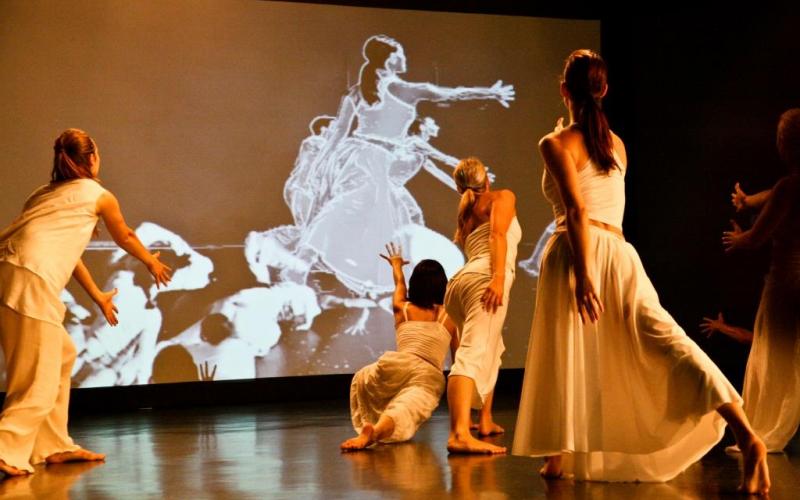
Thesis Guidelines
These guidelines pertain to the written portion of the MFA thesis.
Every M.F.A thesis should include:
Introduction, which should include the "who, what, when, where, and why" kind of information, with definitions and delimiting, where appropriate. Your thesis may open with a straightforward statement of what your research questions are, or a story or description that enhances and leads to a statement of what the thesis will be about. Make sure this introduction really does make your study clear and comprehensible to the reader. This is the "tell us what you're going to tell us" section.
Review of the literature, what's been written about the topic before, or relevant writing from other fields, if dance literature hasn't addressed your topic before. This section may include background and contextualizing information deemed necessary for the reader to understand your territory. This is the "tell us what other people have already said that's relevant to the work you're doing" section.
Theory and Methodology. This may be a long or short explanation of how the student has gone about this study. In some cases, it can be an explanation of why one approach is preferred to another; in other cases, it could be a paragraph about primary use of archival or interview sources. This is the section where you show that you aren't just going out and collecting information randomly; you have a plan, and it's a plan based on what will work best to discover what you want to discover.
Body of the Thesis. This is the major description of your work, discoveries made, things uncovered, highlighted, analyzed, considered in depth. This is the "Tell us about it" section.
Conclusion. Recapitulation, assessment, and indication of strengths, weaknesses, and further directions suggested by the study. This is the "tell us what you told us" section.
Notes, Bibliography and Appendices. You can use endnotes, footnotes, intext citation, or a combination, as is appropriate and consistent with a style guide. Appendix material will vary from case to case, perhaps providing an extended background for a topic that would otherwise be too much of a detour in the main text. Tables and statistics would also be found in an appendix. A glossary may also be deemed useful when there are a number of unfamiliar terms to which the reader needs easy access.
Dance M.F.A. thesis checklist:
Follow a style guide (MLA, Chicago Manual of Style); using both in-text citation and footnotes (for longer explanations) is recommended.
Keep a thesis notebook with all guiding questions, sources, and advice in one place.
Use headings that will help you define the section of the work you are going to cover, making each section clear within the body of the thesis. Make sure each title relates to what follows and that the sections follow each other logically.
Identify everyone you mention in the text (dance historian Wendy Hilton; anthropologist Margaret Mead; dance critic Anna Kisselgoff; dance historian Sally Banes, who has chronicled and commented upon the Judson era extensively, etc).
Make sure you define all key terms, either in the text or at length in a note or glossary. The way you use terms such as "modern dance," "authentic," "natural," or "ritual" may not be as familiar or acceptable to your reader as you think.
Explain the relevance of who and what you quote. Have you assessed and chosen the best examples of sources to make your point? Do you know who is predominate in a given field, especially when it comes to current work in Dance Studies?
Tell the reader why you are quoting at length, if you do, or why you use a particular quotation. Tell the reader why you are describing a scene or a study you read about; don't just expect them to follow you without "guideposts" that keep your source material related to your study.
Write in a way that makes very clear when your source is "talking" and when the opinions and conclusions are yours.
Avoid sweeping generalizations that are unprovable ("Audiences for years have been cheered up by this particular ballet") and statements that start "it is generally agreed that..." or "everyone knows that...".
Notice the date of your sources and assess the currency of the scholarship.
Follow the department's or your thesis adviser's suggested timeline, and make sure your thesis committee members have drafts or the final thesis in time to give you feedback that might necessitate revisions. Expect suggestions and/or demands; your chair will help you sift through which are the most important.
Be attentive to organization, as well as spelling, punctuation, and grammar.
Read, re-read and edit constantly before submitting drafts or final copies. Reading out loud and finding a proofreader should be standard practice during the writing, re-writing and editing process.
Pictured: UC Irvine dancers in "Ootoo" by John Crawford and Lisa Naugle, an Active Space telematic performance, 2008.

